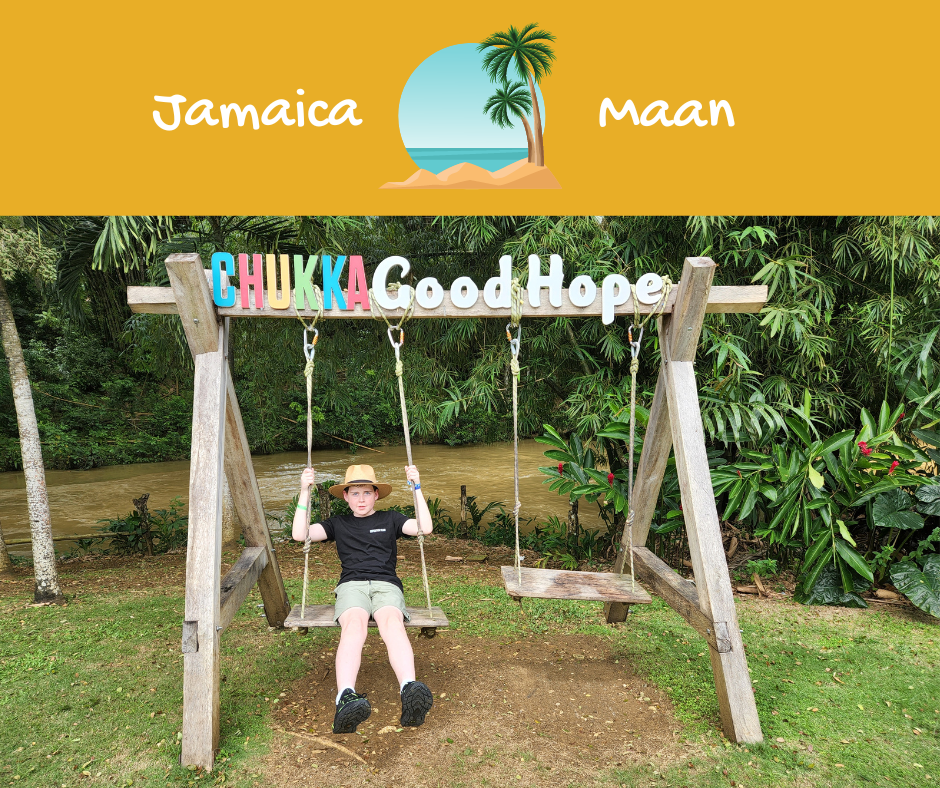We travelled to Falmouth, Jamaica with our 11 year old Kidsetter. We were driven by bus through the Jamaican jungle on a very rough road. Our bus driver was not only informative he was also hilarious saying we will enjoy a free butt massage on the way to Chukka at Good Hope Estate. “It’s not my fault, it’s not your fault, it‘s the ass-phalt”.
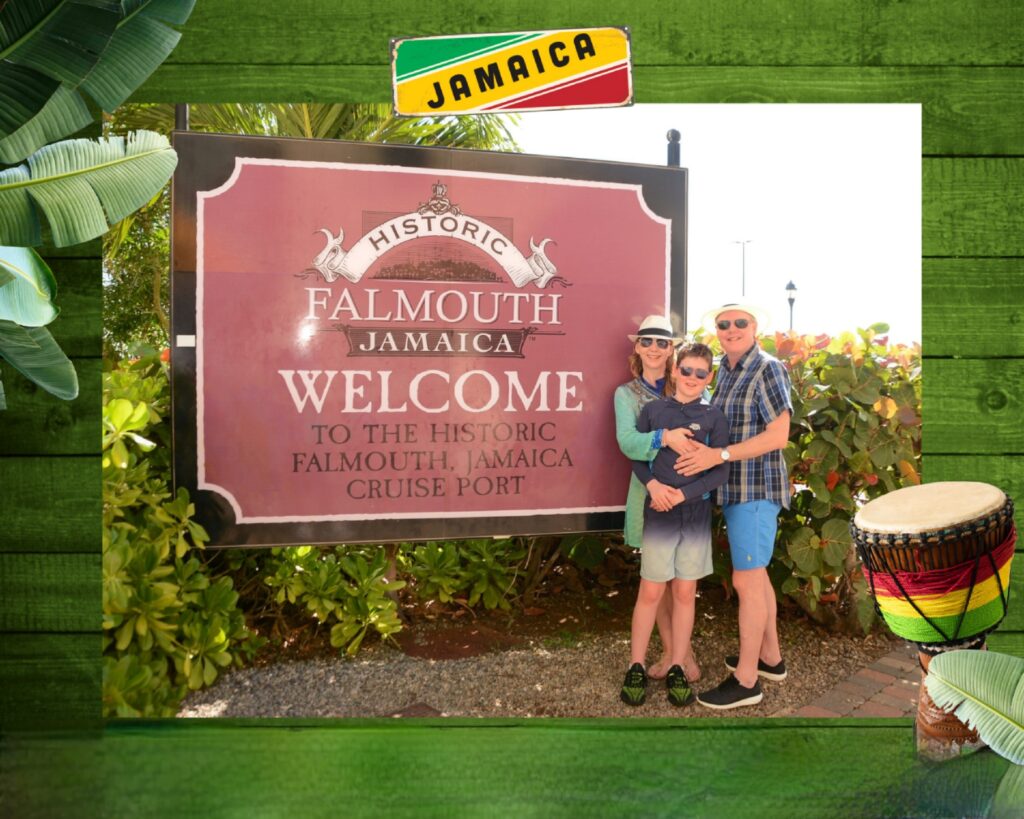
Jamaica was Britian’s richest colony and the centre of the Trans-Atlantic Trade. In 1775 there were 633 vessels manned by 7000 seamen who were employed by the trade of the island. Sugar and Rum are were the largest exports, however today tourism has surpassed them. In 1893 there were 148 rum distilleries in Jamaica, today there is only 6. In England, Rum was initially sold as a health product. As a result, all social classes were consuming large quantities in Punch.
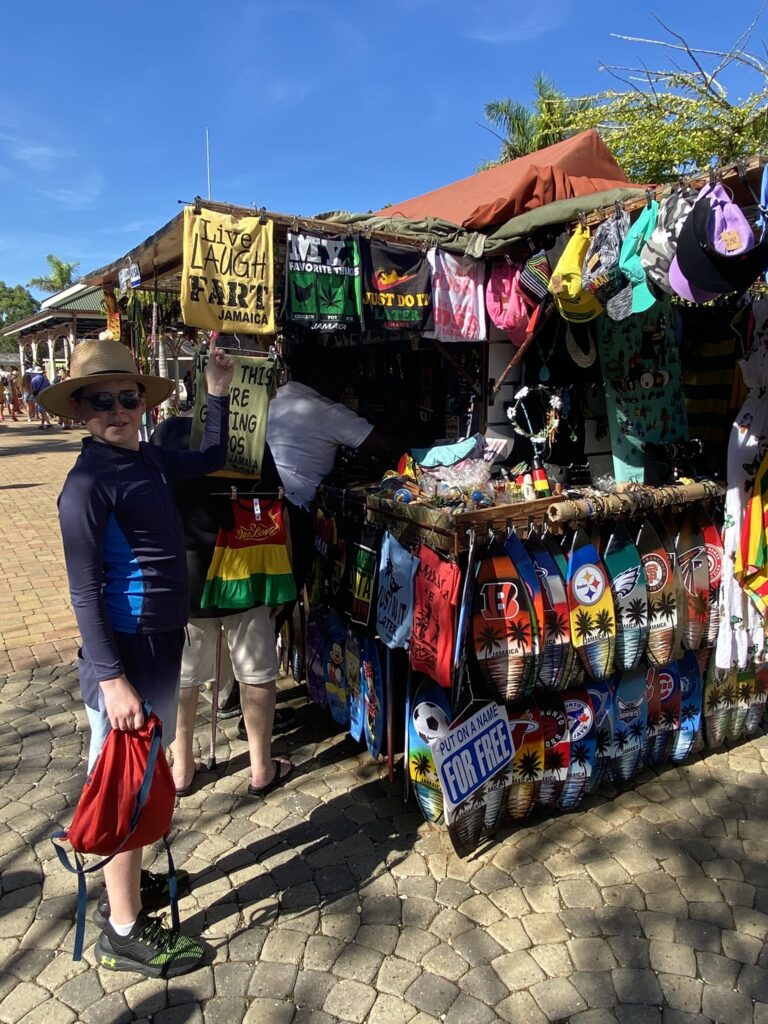
The Good Hope Estate used to be a sugar factory in the 18th and 19th centuries. Sugar being the key ingredient to make rum.

Sugar cane was cultivated for 12-15 months by enslaved labourers. The canes were cut, bound together in bundles and taken by cattle carts to the Water Mill. Cane stalks were pressed by the Water Mill’s rollers to extract cane juice. The cane juice was sent by aqueducts across the river to the Boiling House. The cane juice was washed with lime water from the Marthe Brae River. The juice was then boiled in 5 different iron pots, with each being hotter than the last. It was then cooled where the sugar crystals would harden. The mixture was then placed into Drip Cones, which allowed the crystals to grow larger and drained off the liquid substance called molasses. Drip Cones were transported to the Curing House where sugar was taken out of the Drip Cones and shovelled into Hogshead barrels. The Hogsheads were then taken to the port of Falmouth, 8 miles away, to load onto Tharpe’s ships and be sold to England and the U.S.A.
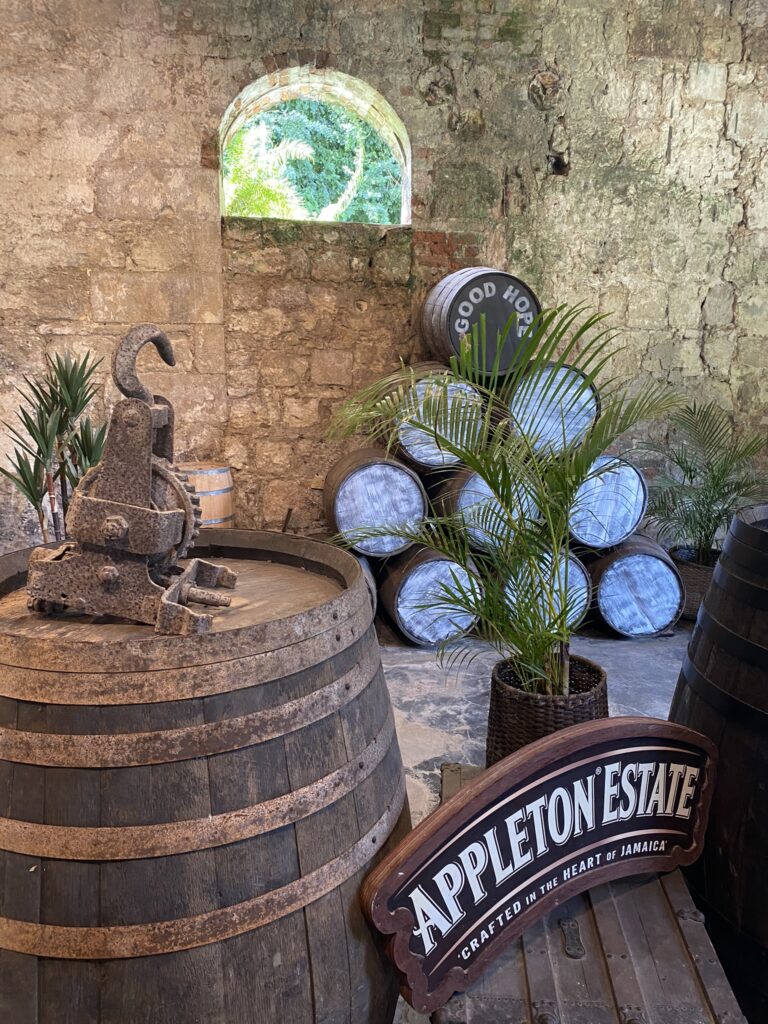
The “Kill Devil” rum was introduced to Jamaica in the 1600’s, originated from Brazil, but made it’s way to Jamaica via Barbados. Kill Devil becomes the popular drink among the pirates at Port Royal Jamaica and thus travels around the world with them. The “Kill Devil” drink becomes known as Rumbullion, which then gets shortened to the word “Rum”.


In the 1700’s the sugar and rum products from the “New World” become wildly popular in England, Europe and the Americas. The demand for sugar and rum production levels boom and the Carribbean and Jamaica in particular respond with exponential growth. Sadly, the Transatlantic Slave Trade is created to support the industry.
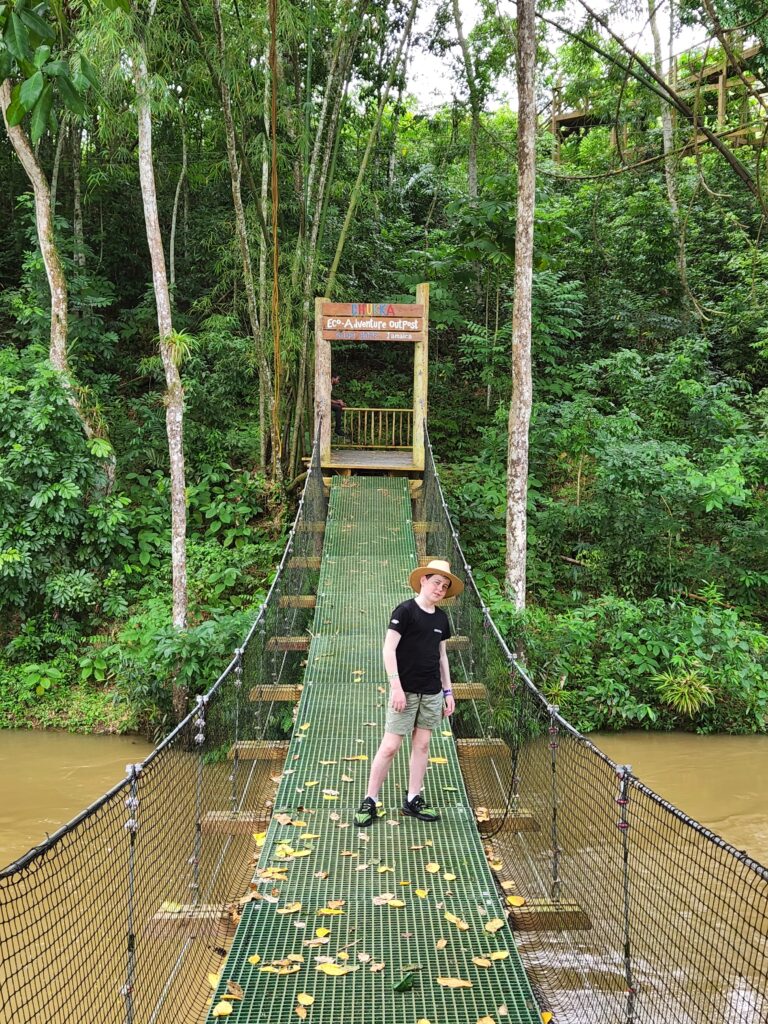
In 1833 Jamaica received emancipation. In the 1800’s rum production becomes competitive as the number of sugar estates like Good Hope begin to dwindle from the loss of their enslaved populations. In 1851 Jamaican sugar declines from providing 20% of the world’s sugar to just 2%. In the late 1800’s J.Wray & Nephew, now Jamaica’s leading exporter of rum wins awards in Europe and becomes internationally recognised.

In the 1900’s Jamaican rum becomes integral to advertising Jamaica as a tourist destination. In 1916 J.Wray & Nephew combine with Appleton Estate, which places Jamaican rum at the pinnacle of the global market for rum, for quality and taste. In 1937 sugar production in Jamaica becomes modernised under the West Indies Sugar Company. As a result, in 10 years sugar production in Jamaica triples. In 1945 “Rum and Coca Cola” song by the Andrews Sisters sells 5 million copies, furthering the international recognition of rum.

We enjoyed chatting to the locals and trying the local Jamaican ‘Jerk’ chicken recipe around a traditional hut.
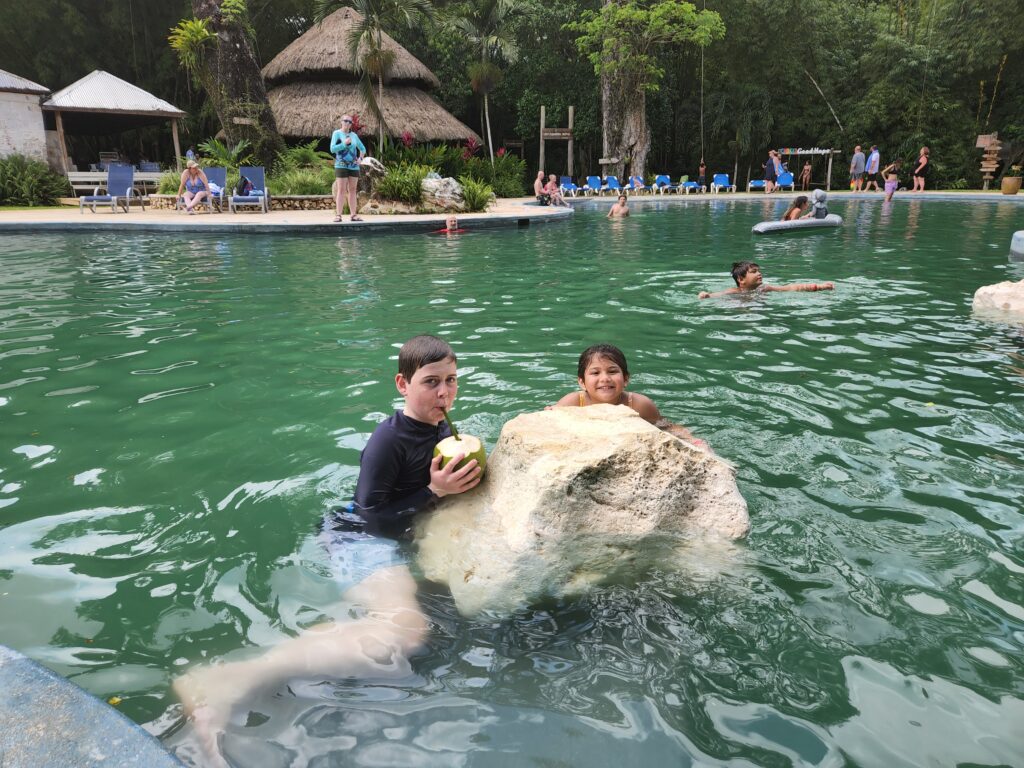
Our Kidsetter played with many of his fellow Kidsetters splashing through the Adventure Falls water park. Making up various water games with a ball, racing down the water slide, using the go pro to capture some funny moments. It was a struggle to get them out of the water at the end of the day.

